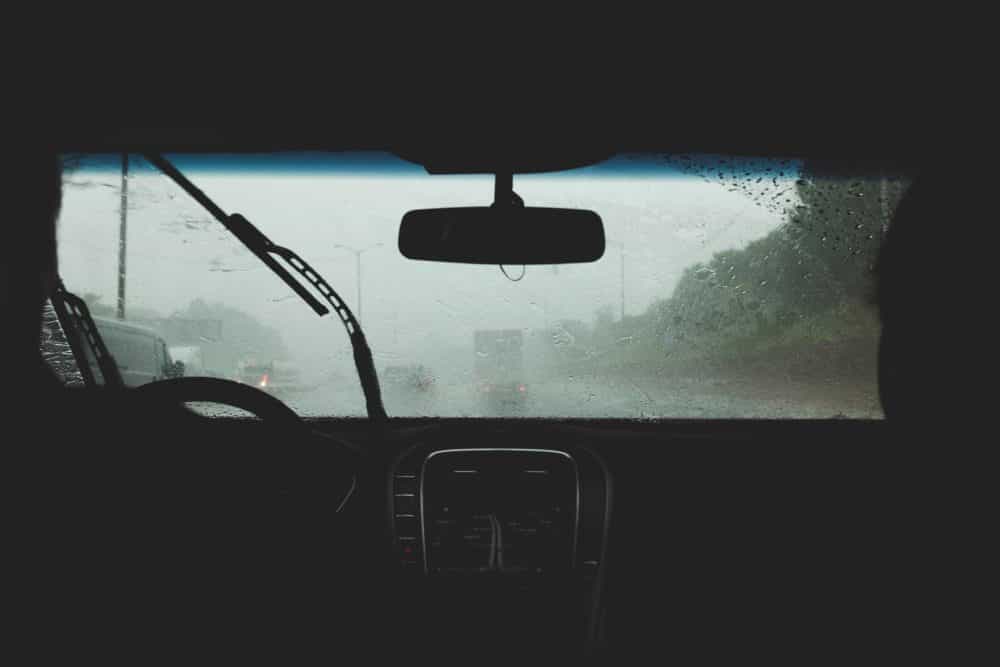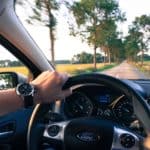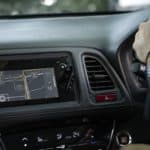Driving in the rain is a normal experience that motorist face regularly. What is not normal nor frequent is facing heavy rain and floods. That is a whole different situation that requires preparation and proper knowledge.
The idea of this article is giving you a guide with actionable advice for rain and flood driving, so read on:
1. Prepare everything before going out
Our first advice for rain and flood driving is planning ahead and prepare everything beforehand.
- Check weather channel, local news, weather app, any mean at your disposal to get the latest information regarding the situation, road closures, accidents, flood warnings, etc.
- Verify the condition of your windshield wipers.
- Verify tire pressure.
- Avoid driving on heavy rain or flood with tires that are below the recommended tread depth.
- Check that your A/C and/or heating system is working correctly. Set it up in defrost mode.
- If your car count with a navigation system then programs it with your destination, so you use alternative routes if necessary.
2. Maintain a proper following distance
When you are driving in heavy rain or during a flood the stopping distances doubles. That’s why you should exercise caution. Under these circumstances, it’s highly advisable allowing a greater distance with the vehicle in front of you, decrease your speed and avoid changing lanes if not necessary.
3. Adapt your driving
A piece of crucial advice for rain and flood driving has the right mindset. Driving during heavy rain and/or flood implies changing the driving style.
- Accelerate slowly. Don’t risk pushing the pedal too much because you can start hydroplaning very easily. Feel the road. If you notice that you are losing traction, then retire the foot from the accelerator and grab the steering wheel firmly.
- Apply the brakes gently. Never be overconfident about your Anti-Lock Brakes system (ABS) or dynamic stability control (DSC).
- Keep in mind the risk of hydroplaning at all times. Every time you spot a puddle release the accelerator and grab the steering wheel firmly.
- Avoid sudden movements.
- Let others driver know what you want to do. Avoid accidents.
4. Watch out for spray effect
A piece of good advice for rain and flood driving is being cautious with the spray effect. If you are behind a truck, an SUV, or any vehicle taller than yours, then you can become a victim of the “spray effect”. Your visibility will be compromised by a “spray” of water coming from the other vehicle. Our suggestion is increasing the following distance so you can recover your much-needed visibility.
5. Turn on headlights
Talking about visibility. Another important advice for rain and flood driving is turning on your headlights. Not the fog lights but the main headlights. You must do whatever at your reach to maintain your car visible to others. Under heavy rain or fog turning on the hazard lights could also be necessary.
6. Driving through puddles
While driving, it will be inevitable going through puddles. Shallow puddles are not a problem. What you should be worried about are the deep ones. Below we included some tips regarding what to do in these situations.
- As soon as a puddle is a sight release the foot from the accelerator pedal. Avoid braking at all costs. The intention is to slow down the car before reaching the puddle.
- Once you are at a convenient speed drive through the puddle at a constant speed. It means no braking or accelerating, just keeping steady pressure on the accelerator.
- If you had not the time to decrease your speed don’t panic. Just release the accelerator pedal and grab the steering wheel firmly. If you sense the car is hydroplaning try to maintain a straight line, don’t brake, that only make things worse.
7. Confronting a flood
Up to now, you learned tips about driving during heavy rain and flood. But what about confronting a flood in all its extent. The first question you should ask yourself is, do you really need to drive under these conditions? If the answer is yes, then start by evaluating the situation.
- Plan ahead, trace a route using a map or a GPS program. Learn about alternative roads. Always have a “plan B”.
- Extreme the precautions drive slowly at a constant speed with your headlights and hazard lights turned on.
- Avoid as much as possible braking suddenly.
- Follow our advice, be patient and concentrate on one obstacle at a time.
8. Passing through deep puddles
Point 6 already gave you good advice for rain and flood driving when facing puddles. Shallow puddles. What about deep puddles?
- Size up the puddle. Stop the car if necessary. Step out and use your best judgment to measure the deep of the puddle. This is important in order to decide if your car can drive through it. A rule of thumb is comparing the deep of the puddle with the height of your tires. If the puddle is deeper than half your tires height don’t go through it (unless you drive an appropriate 4×4 all-terrain vehicle).
- Assuming you took the decision of going on and passed through the puddle, then do it maintaining a constant speed. Deep puddles are dangerous, it’s much like crossing a river. Put a low gear to keep high RPMs and never release the accelerator as water could enter the engine through the exhaust.
- A word of caution. You need to know the limitations of your car before attempting crossing the puddle. Knowing the air intake position is crucial. Some vehicles use a low height air intake to increase power. The air intake should never be below water level.
Our best advice for rain and flood driving is simple, avoid it. Embark in such adventure only if you really need to. Unless you have a lot of experience and drive a big 4×4 truck, then avoid taking unnecessary risks. Postponing a trip is sometimes better than a car breaking down under heavy rain.



